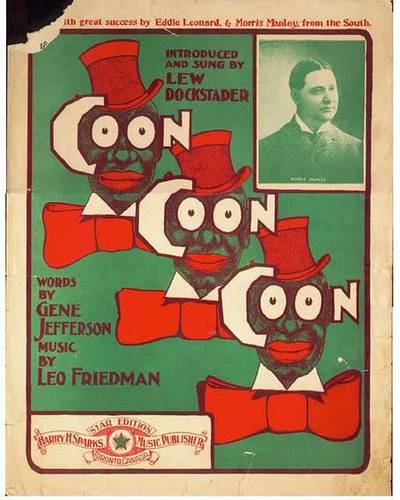World’s most expensive cities, according to a worldwide 2006 cost of living survey by Mercer Human Resource Consulting:
- Moscow
- Seoul
- Tokyo
- Hong Kong
- London
- Osaka
- Geneva
- Copenhagen
- Zurich
- Oslo
New York was number 11.
World’s most expensive cities, according to a worldwide 2006 cost of living survey by Mercer Human Resource Consulting:
New York was number 11.

“A Bawd is the Refuse of an Old Whore, who having been burnt herself, does like Charcoal help to set greener Wood on Fire; She is one of Natures Errata’s, and a true Daughter of Eve, who having first undone herself, tempts others to the same Destruction. She has formerly been one of Sampson’s Foxes, and has carried so much fire in her Tail, as has burnt all those that have had to do with her: But the mark being out of her Mouth, and she grown past her own Labour, yet being a well-wisher to the Mathematicks, she sets up for a Procurer of fresh Goods for her old Customers. And so careful she is to help Men to good Ware, that she seldom puts a Comodity into their hands, but what has been try’d before; and having always prov’d well, thinks she can Warrant ’em the better. She’s a great Preserver of Maiden-heads; for tho’ she Exposes ’em to every new Comer, she takes care that they shall never be lost: And tho’ never so many get it, yet none carries it away, but she still has it ready for the next Customers.”
— The London-Bawd: With Her Character and Life: Discovering the Various and Subtle Intrigues of Lewd Women, 1705
Oprah Winfrey is the world’s only black billionaire.
Woman, thou worst of all Church-plagues, farewel;
Bad at the best, but at the worst a Hell;
Thou truss of wormwood, bitter Teaz of Life,
Thou Nursery of humane cares a wife.
Thou Apple-Eating Trayt’riss who began
The Wrath of Heav’n, and Miseries of Man,
And hast with never-failing diligence,
Improv’d the Curse to humane Race e’er since.
Farewel Church-juggle that enslav’d my Life,
But bless that Pow’r that rid me of my Wife.
And now the Laws once more have set me free,
If Woman can again prevail with me,
My Flesh and Bones shall make my Wedding-Feast,
And none shall be Invited as my Guest,
T’ attend my Bride, but th’ Devil and a Priest.
— From The Pleasures of a Single Life, or, The Miseries of Matrimony, 1709
Barrels per day of oil consumption, as of 2003:

“Who are the Japanese? The inhabitants of Japan, an empire of Eastern Asia, composed of several large islands. They are so similar in feature, and in many of their customs and ceremonies, to the Chinese, as to be regarded by some, as the same race of men. The Japanese language is so very peculiar, that it is rarely understood by the people of other nations. Their religion is idolatrous; their government a monarchy, controlled by the priesthood. The people are very ingenious, and the arts and sciences are held in great esteem by them. In all respects, Japan is an important and interesting empire.”
— From A Catechism of Familiar Things; Their History, and the Events Which Led to Their Discovery, 1881

Erno Rubik, inventor of Rubik’s Cube, became the first self-made millionaire in a communist country.

Lyrics to “Coon! Coon! Coon!”, billed as “The Most Successful Song Hit of 1901”:
Although it’s not my color,
I’m feeling mighty blue;
I’ve got a lot of trouble,
I’ll tell it all to you:
I’m cert’nly clean disgusted
With life, and that’s a fact
Because my hair is wooly
And because my color’s black.
My gal, she took a notion
Against the colored race.
She said if I would win her
I’d have to change my face;
She said if she should wed me,
That she’d regret it soon,
And now I’m shook, yes, good and hard,
Because I am a coon.
CHORUS:
Coon! Coon! Coon!
I wish my color would fade.
Coon! Coon! Coon!
I’d like a different shade.
Coon! Coon! Coon!
Morning, night and noon.
I wish I was a white man
‘Stead of a Coon! Coon! Coon!
I had my face enameled,
I had my hair made straight.
I dressed up like a white man,
And cert’nly did look great.
Then started out to see her,
Just shortly after dark,
But on the way to meet my babe
I had to cross a park;
Just as I was a-thinking
I had things fixed up right,
I passed a tree where two doves
Sat making love at night;
They stopped and looked me over,
I saw my finish soon.
When both those birds said good and loud,
“Coo-oo-oo-oo-oo-oon.”
“Advice to Young Ladies”:
— Enquire Within Upon Everything: The Great Victorian-Era Domestic Standby, 1894
From the Salem Observer, 1840:
“The following letter was written by a young gentleman to his ‘lady love,’ under the direction and eye of a rigid old father. The understanding, however, between the lovers, was, that she should read only every other line, beginning with the first. Love is full of expedients.”
Madam, —
The great love I have hitherto expressed for you
is false, and I find that my indifference, toward you
increases daily; the more I see of you, the more
you appear in my eyes an object of contempt. —
I feel myself every way disposed and determined to
hate you. Believe me, I never had an intention to
offer you my hand. Our last conversation has
left a tedious insipidity, which has by no means
given me the most exalted idea of your character;
your temper would make me extremely unhappy,
and if we are united, I shall experience nothing but
the hatred of my parents, added to their everlasting dis-
pleasure in living with you. I have, indeed, a heart
to bestow, but I do not wish you to imagine it is
at your service; I could not give it to any one more
inconsistent and capricious than yourself, and less
capable to do honor to my choice and to my family. —
Yes, Madam, I trust you will be persuaded that
I speak sincerely; and you will do me a favor
to avoid me. I shall excuse your taking the trouble
to answer this. Your letters are always full of
impertinence, and you have not the least shadow of
wit or good sense. Adieu! Adieu! believe me, I am
so averse to you that it is impossible for me ever to be
your affectionate friend and ardent lover.
— Quoted in The Olden Time Series, Vol. 6: Literary Curiosities: Gleanings Chiefly from Old Newspapers of Boston and Salem, Massachusetts, 1886